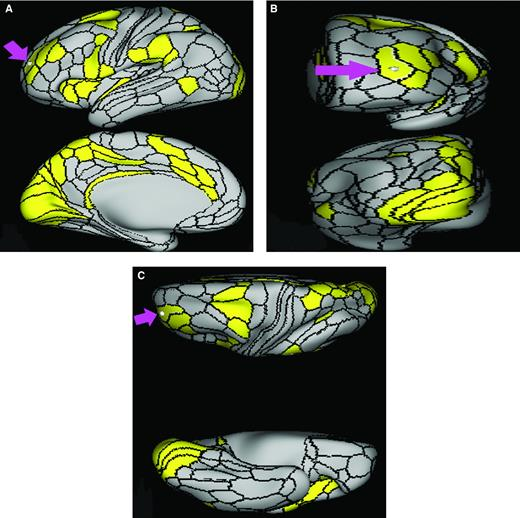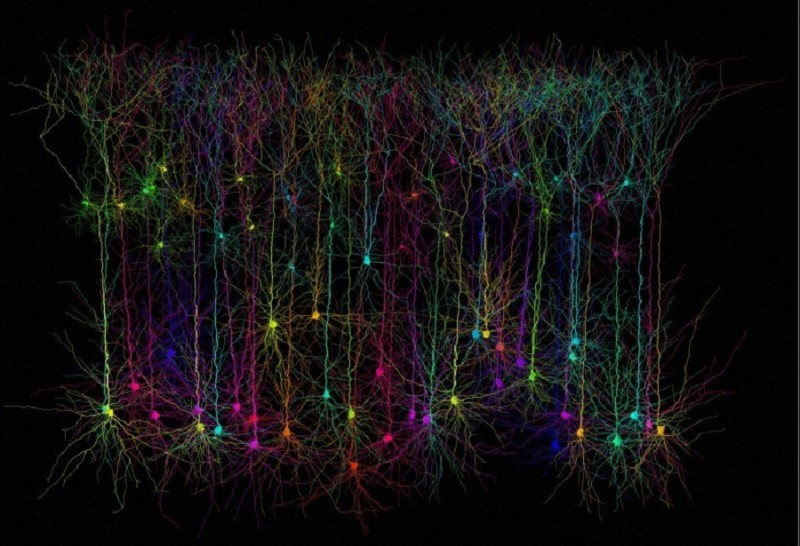I started blogging partly in order to share my progress as it happens. Today I am reporting a new archetypal assignment, for brain area left 9-46d.
I often mark a set of impressions for an area and then return to it later when some new piece of information shows up. In the case of 9-46d, I had written the epithet ‘DEEP LOGIC CHAINS’. It had previously shown up in ‘legal reasoning’ and certain other functional paradigms that involved deep, branching logic chains.
Psychology needs to stop trying to fit old constructs to the brain, and start using the brain to rebuild constructs from the ground up.
The study that provided this morning’s insight is a BioRxiv preprint entitled The Dorsolateral Prefrontal Cortex Presents Structural Variations Associated with Empathic Capacity in Psychotherapists. The investigators identified that psychotherapists had increased grey matter in an area left A9/46d compared to non-therapists.

Jargon Juggling
The first thing you run into when you are doing this kind of work is you have to constantly translate between different nomenclatures. There is a significant amount of neuroscience literature devoted to just trying to translate the terminology used in different papers. This is all frictional barriers with zero knowledge creation. In the psychotherapist study, the research team used the Human Brainnetome Atlas, which is a map constructed by researchers using automated methods. It is similar to the Glasser parcellation used in neuromythography, but is generally not as detailed as the human-crafted methods used in the latter.
Here is A9/46d as it appears in Brainnetome:

Meanwhile, the Glasser parcellation divides this DLPFC area into 9-46d, 46, a9-46v, and p9-46v. No A9-46d. However, we can map it to plain old 9-46d.

Thinking in Labels Is Bad
The researchers looking for evidence that psychotherapists have a higher ’empathic capacity’. There are two problems with this:
1. Hunting for support for your desired outcome instead of letting the evidence lead you where it leads you, is how you fool yourself.
2. ‘Empathy capacity’ is not a very solid concept, and testing it requires you to perform some kind of procedure that you believe is related to this concept. The problem of whether a hypotheses is actually tested by an experiment is known as ‘validity’ in philosophy of science discussions.
Here is part of the researchers’ discussion of their findings:
The fact that the left middle frontal gyrus, in the A9/46d region was thicker in psychotherapists’ brains is conceptually significant. This region, related to executive control, not only is strongly associated with perspective-taking skills (De Waal & Preston 2017; Völlm et al. 20016), but it is also deeply implicated in top-down emotion regulation processes (Enzi et al. 2016; Ochsner & Gross 2005). Moreover, activation in this region seems to negatively correlate to activity in limbic structures—including the
amygdala—during the presentation of emotionally charged stimuli (Sang & Hamman 2007; Smoski et al. 2014; Urry et al. 2006). Thus, we speculate that the greater thickness of this region could reflect a greater tendency to regulate one’s affective states. […]
However, there seemed to be no correlation between the ERQ scores [a psychological questionnaire about the use of mindfulness techniques] and left A9/46d cortical thickness. This suggests either that the psychotherapists engage in other cognitive emotion regulation mechanisms not measured here, or that the ERQ could not capture their higher tendency to engage in cognitive reappraisal to regulate their affective state. Any of these alternatives is supported by the fact that they scored significantly lower on the ERQ Expressive Suppression scale with respect to nontherapsits [sic]. Forthcoming research will be able to shed light on this issue.
Here is the ERQ (Emotional Regulation Questionaire) referenced in the above:

The researchers were perplexed by the result that the ERQ did not relate to the A9-46d finding. They then used a lot of psychology terms like ‘executive control’, ‘perspective-taking’, ’emotional regulation’, ‘cognitive reappraisal’, and ’empathy’ and related them to each other, which is the psychology version of writing mythographies.
One alternative interpretation is that psychotherapists simply do not need to use explicit emotional regulation techniques as described in the ERQ because they regulate automatically. This automatic regulation seems to be mediated by vmPFC areas (in women and dmPFC areas (9m and 8BM) in men. These areas were not considered in the present study.
The abstract noun labels that psychologists created before we had modern access to the brain are showing their age. This is why when psychologists attempt to find the neural correlates of psychology constructs, things get muddled.
Thinking in Archetypes is Good
Earlier I had mentioned that I had long ago assigned the epithet of 9-46d of DEEP LOGICAL CHAINS, because that was the overall impression I had received from the neuroscience literature. The question that this psychotherapist study triggered in me was ‘what do lawyers and psychotherapists have in common?’ The answer is they both engage in deep logical chains.
Lawyer: …according to the Bailey Act, a dog must be kept on a leash, but this was distinguished in Johnson vs. Evans if the dog is less than 20 pounds, and the liability implications were further established in Willis vs. City of Alhambra…
Psychotherapist: You told me about your mother, and the trip to the fair, and how that affected your future romantic relationships. Do you think that your fear of clowns might be connected to this?
We can retrospectively infer then that from this defined capability–deep logical chains–emerges some facets of psychology constructs like emotional regulation, rationalization, cognitive empathy, but unlike those constructs this one is derived from actually studying brain area 9-46d in order to infer what its role is. Psychology needs to stop mapping old constructs to the brain, and start using the brain to rebuild constructs from the ground up.
The Naming of the New
And Adam gave names to all cattle, and to the fowl of the air, and to every beast of the field.
This leads to the creative process of assigning an archetype with a catchy allegory. Clearly left 9-46d is one of the substrates of sophistry, and I like to add some kind of cautionary tale in my allegories. What immediately came to me was a scene in Monty Python and the Holy Grail, where the knight Bevidere the Wise walked the angry witch-burning crowd through a logical thought process by which one could justly test whether a woman was a witch–by comparing her weight to a duck. Thus, I have named left 9-46d Bevidere.
Many of the archetypal assignments have this sort of playful spin, emphasizing the pitfalls of the functional area instead of its putative function in terms of abstract nouns. This is partly to make it memorable, and partly to force us to think of the brain area’s personality role instead of its connection to some fuzzy abstract noun ensconced in a circular chain of tautologies.
In the future, references and brain areas will be automatically linked to the Neuromythograph so that you can see them in context of all the connections and archetypes. I am still working through the details of making this technically manageable, and would be grateful for WordPress technical assistance.




